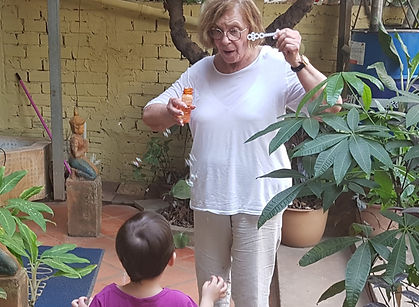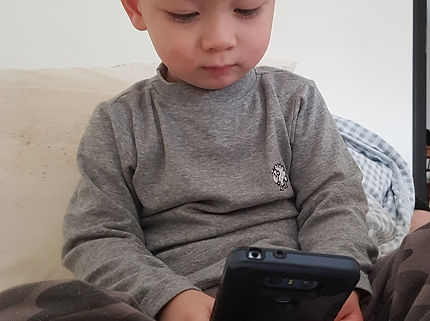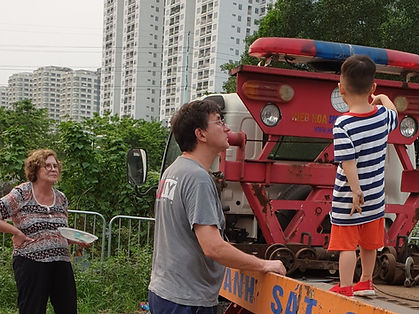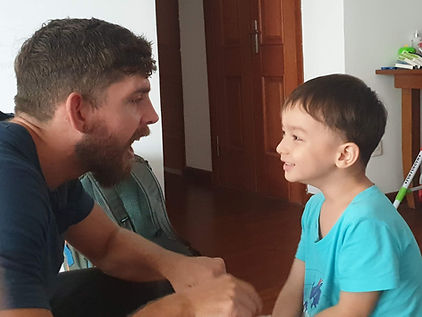Act Early
Act Early - Early Intervention
The Act Early program is designed to track a child’s development and encourages families to take action if there is a concern (Act Early). Early intervention addresses a child’s overall development. It can make extraordinary differences in a child’s development and will improve the outcome if he or she has autism or a related condition (100-day kit).
The list below is what we have done for our son. In much of the world, only the first three items are available and/or affordable. We believe everyone with a child in need should implement these three items and those fortunate to have resources, to do them all. We calculate approximately 4 million preschool children currently have autism worldwide and are in need of early intervention.
1. Family recognition that a problem exists with sufficient acceptance to take action. It took our family six months to accept the diagnosis of autism. In some cultures, the diagnosis will often never be accepted or at least not talked about. We immediately accepted “speech delay with impaired interaction” and eventually "autism." The bottom line is that the interventions are the same. In countries where medical insurance only covers children with a diagnosis of autism, the diagnosis should be made as rapidly as possible. A reliable diagnosis can be made between 18-24 months. We suspect that the actual diagnosis will help motivate many families to take action as it did ours. When we accepted the diagnosis, we stopped our malaria program in Cambodia to make sure we were doing everything possible for our son in Vietnam.
Please take action with your child, even if you have not accepted the diagnosis yet!
2. Stopping screen time. Screen time is all exposure to cell phones, tablets, television and includes background exposure to these. Screen time beyond limits is not good for any young child, especially those potentially having adverse effects from it. A growing body of evidence links excessive screen time to symptoms of autism and reversal of symptoms when it is stopped (Harle 2019, Sadeghi, 2019). Please click here to see the emerging evidence by Sadeghi et al. Although we did many things at the same time, we believe stopping screen time helped our son substantially. He son is part of a case series for screen time removal at Drexel University in the USA. The potential benefit of screen time removal is large and there is no risk for the child! We believe all children with symptoms of autism deserve a trial of screen time removal and should have no more than the maximum recommended limits (WHO, AAP). Click here to learn more.
3. Family engagement. Family engagement is interacting with your child in a manner in which they can develop and learn. Children with autism and related disorders almost always can learn, but need special methods (ref). Family engagement is critical to change outcomes, especially were no other resources exist. I first read two books, Early Start Denver Model for parents “An Early Start for Your Child with Autism: Using Everyday Activities to Help Kids Connect, Communicate, and Learn” and “More than Words.” I also viewed the PLAY Project videos available on line. Our family has been using these methods since. We believe all families (rich or poor) with children with symptoms of autism should have ready access to these books and effective on-line training. Reading stories is essential; we have done this to the greatest extent possible with our son (he initially refused, but is now enjoying reading). We have been trying to get in person family training, so far without success except from our personal autism specialist (see ABA below). We believe all families must engage in a special manner with their child who needs them. Click here to learn more.
4. Special Education. In the USA, the focus of special education is different from that of early intervention. While early intervention services address overall development, special education focuses on providing an education for those with special needs (100-day kit). We initiated special education as soon as we had a diagnosis of speech delay. It appeared to help our son a lot. This is the only intervention readily available in Vietnam (only in big cities). We found the qualification, motivation and skill of the special education teachers to be highly variable. We chose those that said they were using ABA techniques and had good recommendations. To our knowledge, no one is using a training plan designed for overall development of children with autism. We recommend you implement education with special education for your child as soon as possible (if feasible). For more information about how to choose a teacher or center click here.
5. Applied behavior analysis (ABA). ABA is the use of use techniques and principles to bring about meaningful and positive change in behavior (100-day kit). Research shows that ABA is effective for improving children’s outcomes, especially their cognitive and language abilities (100-day kit). Our insurance company is extremely particular about ABA coverage. With a year of effort, we were able to bring and American ABA specialist to Vietnam. We believe ABA is really helping our son and that all children in need who have access should receive it.
6. Speech Therapy (ST). Speech therapy (ST) is a component of standard therapy for all children with autism in the USA. ST is a broad field, with a subset of teacher trained in special methods to help children with autism. We were able to find one speech therapist in Hanoi who recommended we read and implement “More than Words.” In hind site, we should have started remote ST at the time of our son’s diagnosis. Our insurance would have paid for it.
7. Occupational Therapy (OT). Occupational therapy is a component of standard therapy for all children with autism in the USA. It addresses a combination of cognitive, physical and motor skills to gain age-appropriate independence (100-day kit). OT specialists also address sensory disturbances, a common serious problem in children with autism. Our son had an OT consult early on; we opted not to continue as his motor skills were nearly normal and his had no obvious sensory disturbance. In hind site we should have continued it.
Our partner organization, Learning Solutions International (LSI) is planning to offer a service to train, mentor and monitor special education, clinical psychologists and English teachers in ABA and ST techniques. This will include overall development training plans and support family training by Vietnamese-American and American autism specialists. LSI can also recruit ABA, ST and OT specialists to come overseas. If you may be interested as a teacher or parent, click here.

Figure 1. Family accepted a problem. Grandma teaching us how to play with our son (with bubbles). With her encouragement and time, we sufficiently accepted the problem to take action.

Figure 2. Stopped screen time. Before his diagnosis, we tried to keep our son in screen time limits. In hind site, he had a lot of background TV at home, additional time at friends houses and by our nanny when we were working. We enrolled him in a case series at Drexel University of stopping screen time. Please click here to see some emerging evidence. Learn more.

Figure 3. Family engaged. Based on what we learned, daddy played with Henry three hours per day using the "follow his lead" and "more than words" techniques. Adding mama time, he had learning from waking to sleeping every day. Learn more.
_edited.jpg)
Figure 4. Started special education. We first enrolled Henry in a preschool that said they did ABA. They taught our son his first 100 words to communicate. When he learned to communicate, the most challenging behaviors improved (100-day kit). We then transferred him to a school with structured classes with regular kids where he also had two hours of quality special education per day Learn more.

Figure 5. Added applied behavior analysis (ABA). When Henry was three, an American specialist came to Vietnam to help. ABA appears to be very effective for our son. It is the method with most evidence for benefit in children with autism. Learn more.

Figure 6. Our Partner Learning Solutions International. Our international NGO is not allowed to collect funds in any form in Vietnam. Therefore, we have started a partner organization to help us accomplish our mission. Learn more.
